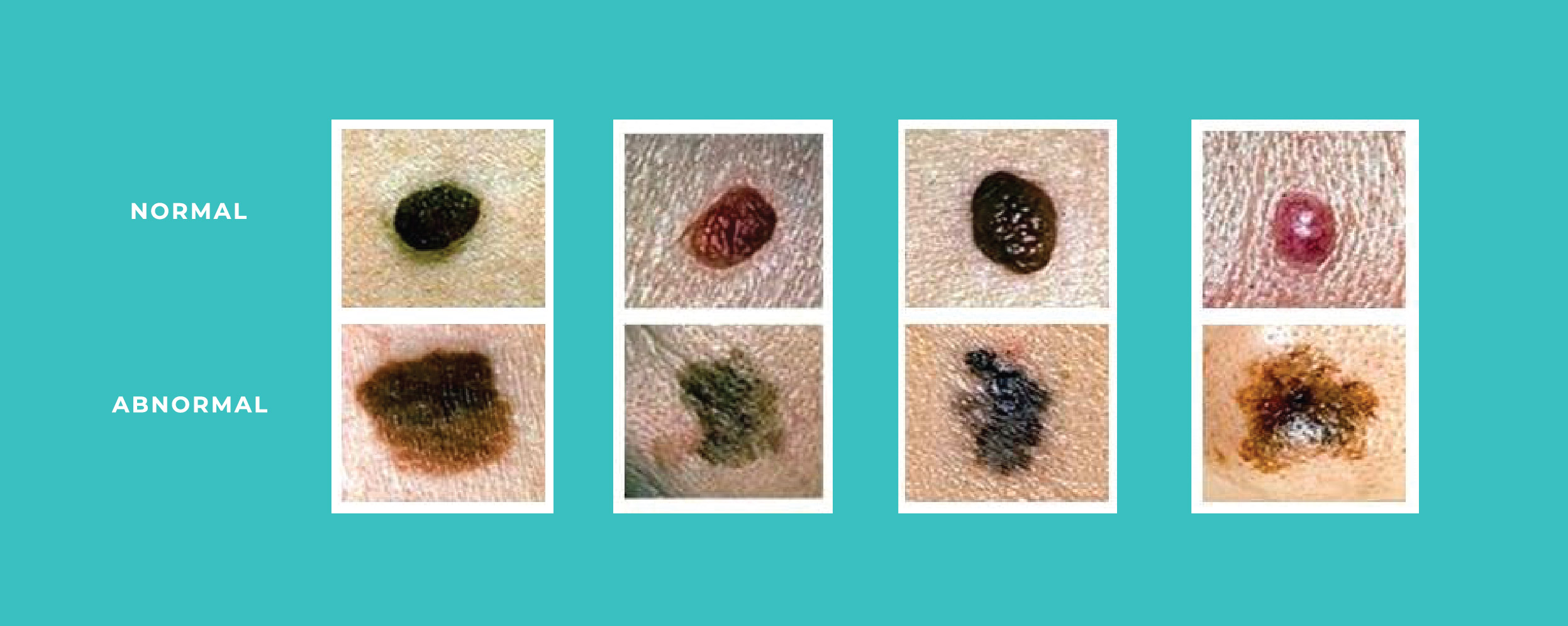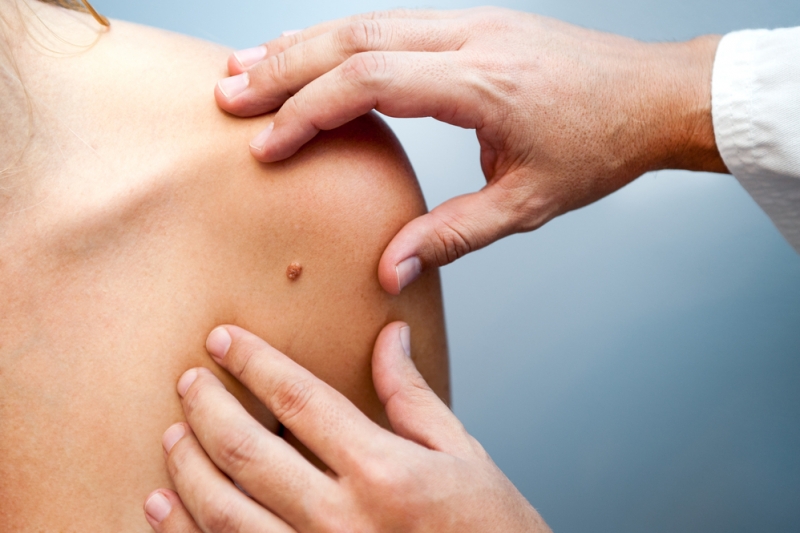Skin Cancer
In the United States, approximately 9,500 people are diagnosed with skin cancer every day, making it the most common form of cancer in the country.
Chronic, cumulative sun exposure is the most important contributor in developing skin cancer. However, other factors including x-ray exposure, scarring from burns and diseases, occupational exposure to compounds such as arsenic and tar, as well as family history do play a role in your risk as well.
You can minimize your risk of skin cancer with lifestyle changes including minimizing sun exposure, wearing sunscreen daily and conducting self-examinations.
We highly recommend that all patients conduct monthly self-examinations at home, along with scheduling annual skin examinations with our board-certified dermatologists to identify skin cancers and pre-cancers. Early detection can be key to a successful treatment result.
Understanding Skin Cancer
There are several types of skin cancer and each may present differently. Learning what to look for and paying attention to changes in your skin is essential.
Actinic Keratosis (AK)
This precancerous lesion appears as small, rough, textured spots that are found especially in areas that have been frequently exposed to the sun. Most are red, but some are light or dark tan, white or a combination of colors. They have the potential to progress, if untreated, into squamous cell carcinoma.
Basal Cell Carcinoma (BCC)
BCC is the most common form of skin cancer, frequently seen on sun exposed sites such as the head, neck and arms, but can appear anywhere. It presents as red patches or pearly red bumps, nodules or persistent sores. When left untreated, these lesions enlarge, bleed, crust, heal and repeat the cycle as they get larger, deeper and become more locally destructive.
Squamous Cell Carcinoma (SCC)
SCC is the second most common form of skin cancer. This form is most commonly seen in fair-skinned individuals or transplant patients. It presents as a red, scaly patch or nodule, often seen on the rim of the ears, face, lips, shin or mouth, but can also occur anywhere on the skin.
Early detection is incredibly important, as this type of skin cancer can metastasize and spread to other parts of the body.
Malignant Melanoma (MM)
Malignant Melanoma is the most deadly of all the skin cancers. MM are classified as thin, intermediate or thick, and that classification defines their level of seriousness. Melanoma can spread, making early detection essential.
It can appear as a new growth or from a preexisting mole. Look for any new, changing, unusual or bothersome moles using the ABCDEs of Melanoma:
A is asymmetry, where one half is different from the other
B is border irregularity, with ragged or poorly defined edges
C is for color not being uniform, often with various shades
D is for diameter greater than 6mm (approximately the size of a pencil eraser)
E is for evolving or changing lesion

Increased risk factors include a significant history of sunburns, being fair-skinned, having red hair or those having many moles or atypical moles and those having a family history of melanoma.
Treatment
Treatment options vary depending on the stage, type and severity of each individual skin cancer diagnosis, but may include:
- Excision
- Electrodessication & curettage
- Cryosurgery
- Radiation
- Topical Chemotherapy
- Photodynamic therapy
- Mohs surgery
Protection, early identification and diagnosis is key! We encourage you to protect your skin, examine your skin regularly and alert us of anything suspicious.
When it comes to managing your skin’s health, it is important to choose an experienced and knowledgeable specialist. To schedule an appointment to meet with one of our board-certified dermatologists to discuss skin cancer prevention and concerns, please call our office: 313-884-5100.

